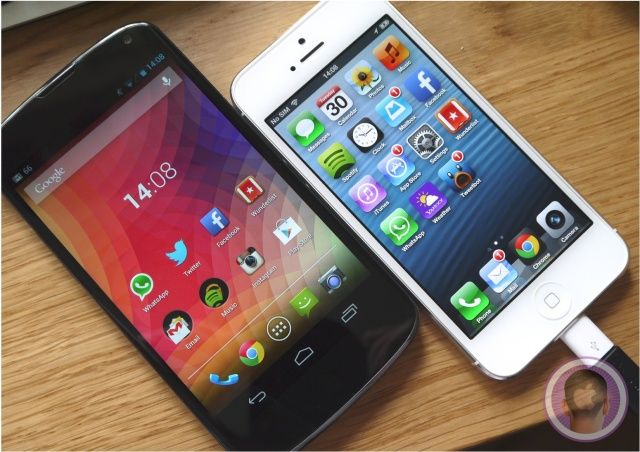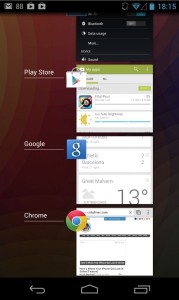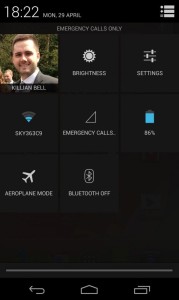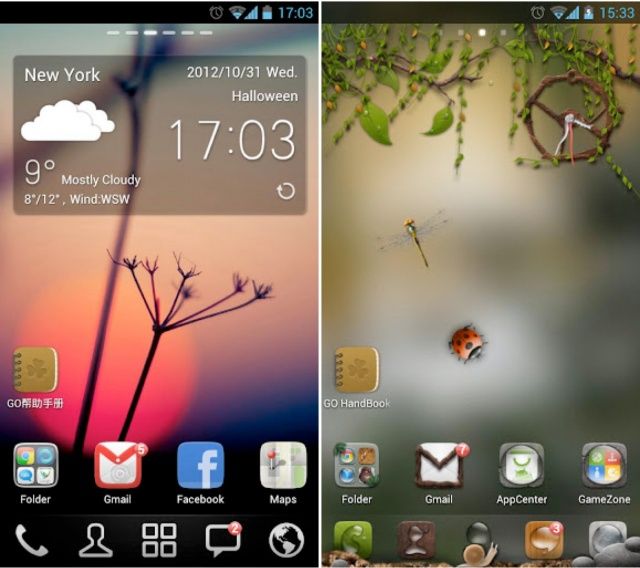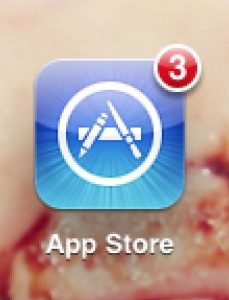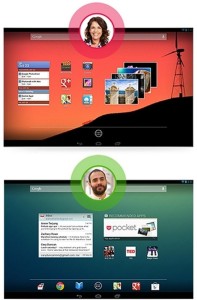7 Things iOS 7 Should Learn From Android [Feature]
Apple’s Worldwide Developer Conference is just a week away and although it’s highly unlikely we’ll see any new iOS devices, we will get our first glimpse at iOS 7.
iOS 7 could be one of the biggest iOS updates to date, with many rumors claiming it will be completely overhauled with a new look and new features as Jony Ive makes his mark as the head of software design. A report that was published earlier this month claims that Apple has had to pull engineers away from OS X 10.9 to help complete it.
Personally, I couldn’t be more excited about iOS 7. I made the switch to Android just before Christmas because I found Jelly Bean on the Nexus 4 to be better than iOS 6 on the iPhone 5 at a lot of things, which I wrote about back in February.
Having used Android for four months, I’ve compiled a list of things iOS 7 should learn from its biggest rival. If Apple adds these things to its own platform — or variations of them that provide the same experience — then I think iOS 7 could be fantastic.
Check out the list below and see if you agree.
Multitasking is better with previews
Multitasking was first introduced to iOS with iOS 4 back in 2010, and almost three years on, it hasn’t changed a bit — we still rely on a row of icons to jump between apps. In Android, however, users don’t just see an app’s icon, but also a preview of what’s going on inside their running apps.
In some cases, having a row of icons is just fine. When you’re jumping between a game and your email client, for example, it’s easy to establish which is which. But if you’re working on your iPad and you have open a note-taking app, a word processor, a web browser, and another app displaying a PDF, it becomes a little more difficult to keep track of what’s going on within each one when you’re switching between them.
With a preview window for each of those apps, that’s no longer a problem.
We have big, beautiful displays on our iOS devices, and Apple crams multitasking into a little tray along the bottom. We’d like to see that change for iOS 7.
Not everyone uses the built-in apps
When you start up an iPhone or an iPad for the first time, you’re greeted by a collection of apps that are baked into iOS. Some of these are essential, like Phone, Messages, iTunes, and the App Store. But others, like Stocks, Weather, Notes, and even Maps, are not.
Android lets you choose your default apps yourself. Why can’t iOS do the same?
It’s nice to have these apps, particularly if you’re new to iOS and you’re not yet ready to download third-party apps from the App Store. But for many users, it would be even nicer if we could replace them.
Android lets you choose your default apps yourself. If you don’t like the built-in calendar, email client, web browser, or media player, you can download a third-party alternative from Google Play and then tell Android that you’d like to use those apps by default.
So when you tap on links or email addresses, or open videos and images, they automatically launch the apps you’ve selected — not those baked in by Google.
This isn’t possible in iOS. Every URL opens in Safari, every email address launches Mail, and every address launches Maps, whether you use those apps or not.
Certain settings should be easier to access
In Android, activating or deactivating things like Wi-Fi, Bluetooth, airplane mode, and more is as simple as pulling down the notification panel and tapping a toggle. In iOS, it takes a lot more effort; you’ll need to dig around inside the Settings app to do the simplest of things.
It should be a lot easier. There are a ton of tweaks for jailbroken iOS devices that put settings toggles in the Notification Center or multitasking tray, or even on the home screen, and Apple needs to adopt one of these for iOS 7.
I’m not asking to have everything one gesture away, but common settings need to be easier to get to.
Customization is good
People like to customize their smartphones and tablets and make them their own. Google’s “open” approach makes Android perfect for this. Users can download a ton of custom themes, launchers, and even keyboards that give their device a look that suits them.
Why can’t Apple do the same for iOS 7?
I understand why Apple doesn’t want you to change too much. It can become confusing for novice users who make changes they don’t mean to make, and it’s much more difficult to troubleshoot devices if they look completely different to the default operating system. But this shouldn’t be an issue with a simple skin.
Take the Ayecon theme that’s available to jailbroken iOS devices as an example. It doesn’t change the way iOS functions in any way, and it doesn’t slow it down; it just gives it a new look — one that many users much prefer.
Allowing themes wouldn’t just please a huge number of users who like customization, but it could also be a yet another revenue stream for Apple. If the Cupertino company allowed themes, and it sold them through the App Store, taking the same 30% cut that it takes from apps, it could make a small fortune.
App updating should be automatic
Checking the App Store for updates once or twice a day used to be part of my routine, until I switched to Android last December. Android allows you to update your apps automatically, which means new releases are installed in the background when they become available, and you don’t have to do anything.
Android allows you to update your apps automatically. This is another feature iOS 7 should be stealing.
This is another feature iOS 7 should be stealing from its rival. Scheduled updating would be even better.
Because I’ve become used to having my apps updated automatically, I often find I have a dozen updates waiting to be installed when I pick up my iOS devices again. This becomes a problem if half of those updates are for games, and you have to wait a while for large files to download.
With automatic updating, we wouldn’t have to worry about manually installing updates again. Alternatively, Apple could give us scheduled updating, which would be even better. This would allow you to specify a time that the App Store searches and then installs app updates, which means you could set everything to install during the night when you’re device isn’t in use.
Apps work well together
One of the best things about Android is that apps work together. If you want to upload a photo to Facebook, Twitter, Picasa, Google+, or Flickr; or send it via email, WhatsApp, or Skype, you can do so from within the Gallery app, because all your apps work with each other.
In iOS 7, I want to see apps working together like they do in Android.
And when you install new apps, they instantly become available inside other apps. In iOS, we don’t have this luxury. The Photos app will allow you to upload to Facebook and Twitter, or send via Messages, Mail, or Photo Stream — that’s it.
In iOS 7, I want to see apps working together like they do in Android. It works really well, and it doesn’t have to be messy, so there’s no reason why this feature should be left out. Again.
Tablets are for sharing
My iPad gets used by almost everyone in my house, and I know it’s not the only one out there that gets shared among the family. With that being the case, having support for multiple users would be terrific. Android has this for tablets, and it works great — the iPad needs it, too.
Having your own account would allow you to have your own wallpapers, your own apps laid out the way you want them, and your own settings and preferences. You could even have your own password if you choose to.
So regardless of who’s been using your iPad before you, it’ll be exactly as you left it when you get it back. Your bookmarks will stay the same — you won’t find links to Little Pony or Hello Kitty, no one will have beaten your terrible high score in Angry Birds, and you won’t strange photos in your camera roll.

